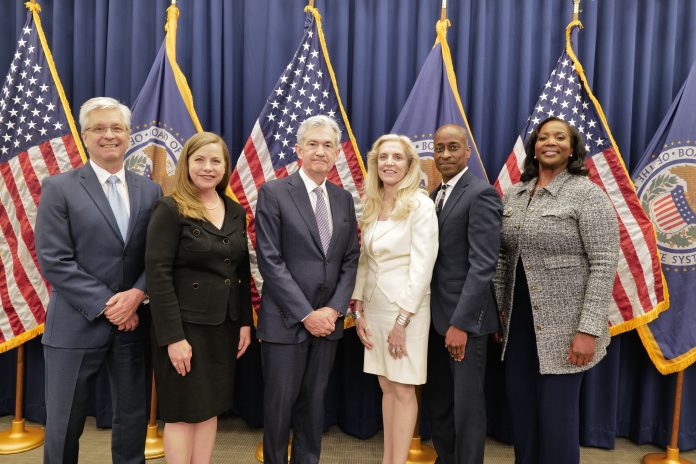The Federal Reserve kept interest rates the same for the sixth time in a row on Wednesday. This decision was expected because recent reports on inflation weren’t good, making it less likely for rates to be cut later this year.
The decision means interest rates stay between 5.25% and 5.5%, which is the highest they’ve been in 23 years. There are signs that progress in controlling inflation is slowing down, or maybe even going backward.
After their meeting, the policymakers said they might cut rates, but they want to be sure inflation is going down before they do.
They said, “In recent months, inflation hasn’t made much progress toward our goal of 2 percent.”

In March, the Fed predicted that interest rates would drop to 4.6% by the end of 2024. This suggests there could be three rate cuts of 0.25% this year. But now, many Fed officials aren’t so sure about those predictions. This comes after inflation reports in January, February, and March were worse than expected.
Although inflation has gone down from its highest point, it’s stayed pretty much the same since the summer. The Fed’s favorite measure shows that inflation is at a 2.7% pace, which is above their goal of 2%. When you don’t count food and energy, core inflation is even higher at 2.8%.

Jerome Powell, the Chair of the Fed, said, “Inflation is higher than we thought it would be. It might take longer than we expected to be confident it’s going down.”
Policymakers increased interest rates significantly in 2022 and 2023 to the highest levels since the 1980s. They did this to slow down the economy and reduce inflation. Now, they’re trying to figure out when it’s the right time to ease up on these high rates.
Most investors think the Fed will start lowering rates in September or November. They expect only two cuts this year. This is a big change from earlier in the year when they thought there would be six cuts starting as early as March.
When interest rates go up, it becomes more expensive for people and businesses to borrow money. This usually slows down spending because people and businesses have to be more careful with their money.

The average rate for 30-year mortgages has gone above 8% for the first time in a long time. Borrowing money for things like home equity loans, car loans, and credit cards has also become more expensive.
But even though rates have gone up quickly, people are still spending money, and businesses are still hiring workers. In March, businesses added 303,000 new workers. There are still lots of job openings, and the unemployment rate is around 3.8%.
However, Powell said on Wednesday that it’s unlikely there will be another rate increase, even though the economy is doing well and inflation has slowed down recently.
“I don’t think the next change in policy rates will be an increase. We haven’t seen any evidence that our policies are too restrictive,” he said. To raise rates again, the Fed would need strong evidence that their policies aren’t restrictive enough.
After Powell said this, stock prices went up, and all three major stock indexes rose.


